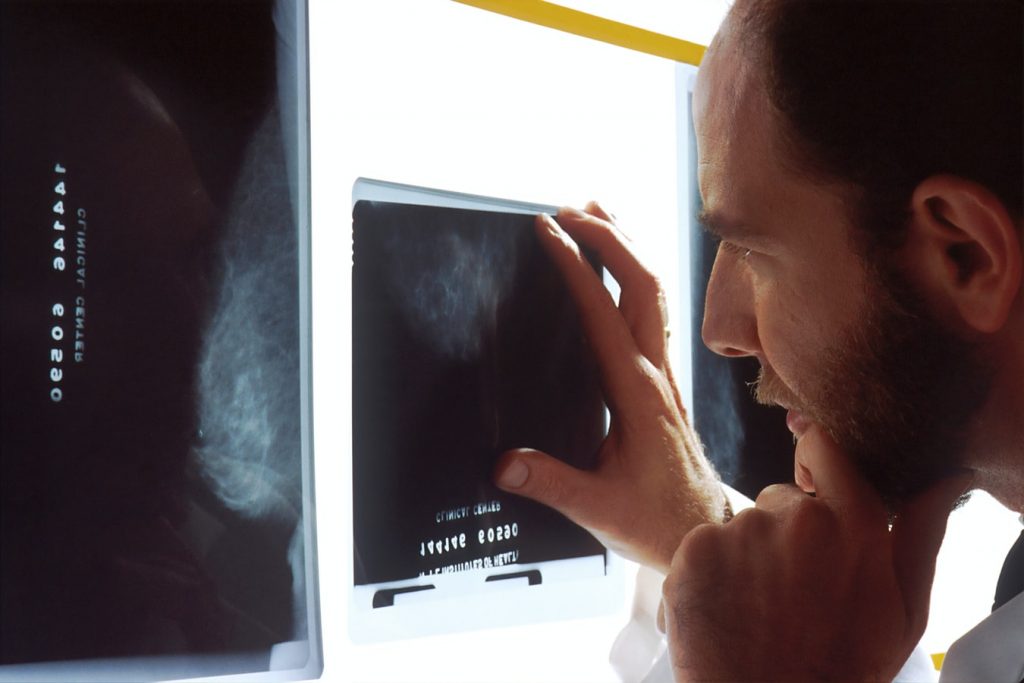- What are the symptoms?
- What causes spinal pain?
- Diagnosis and Tests
- Treatments for back pain
- When it’s Time to see a doctor

Spine pain can occur anywhere from the neck to the lower back. There are numerous reasons someone’s back my start hurting, ranging from a mild case of temporary muscle strain to a serious medical condition like spinal disc degeneration. The steps to take when pain develops depends on the condition causing the pain.
What are the Symptoms?
The spine is a complex of interconnected bones, muscles, nerves, ligaments, and tendons. Any of these tissues can be injured, deteriorate, or diseased. The spinal column has four regions which are the:
- Neck area (cervical)
- Upper and mid-back (thoracic)
- Lower back (lumbar)
- Tailbone (sacral)
Spine pain symptoms can vary, sometimes making it difficult to recognize exactly what is occurring and where the pain is originating. Back pain can be a:
- Muscle pain that ranges in intensity from mild to severe
- Radiating pain shooting down a leg
- Shooting pain
- Stabbing pain
- Pain that eases when not standing or while laying down
- Pain that worsens during movement, including walking, lifting, bending, twisting or standing
Spinal pain in any of the spinal column regions should not be taken lightly, and especially if there are other symptoms. Sometimes, back pain is accompanied by:
- Stiffness that restricts the range of motion
- Muscle spasms
- Weakness
- Fever
- Bladder or bowel problems
- Loss of some motor function
- Numbness
- Tingling feeling
- “Pins and needles” feeling due to nerve issues
- Dizziness and/or headaches
Some symptoms indicate a visit to a physician is needed. For example, pain starts immediately or within a few days after a fall or vehicle accident. It can take a couple of days for swelling to occur, signaling the spine or surrounding tissues were injured. Some symptoms are more serious than others too. Spine pain accompanied by bladder or bowel problems or fever can indicate a serious spinal related issue.
What Causes Spinal Pain?
There are numerous spine pain causes, some due to lifestyle and some due to injury or disease. Some of the most common causes include:
- Aging
- Lack of exercise that leads to weak back and core muscles
- Injury at home, work or while participating in sports or recreational activities
- Being overweight or obese which places stress on the spine
- Overexertion that strains muscles or tendons or sprains ligaments
- Consistent poor posture that causes spinal misalignment
- Heavy lifting that strains spinal ligaments and back muscles
- Genetics
- Nerve problems
Diseases that include, but are not limited to:
- Osteoarthritis
- Rheumatoid arthritis
- Bulging disc
- Ruptured (herniated) disc
- Spinal disc degeneration
- Skeletal irregularity like scoliosis
- Stenosis
- Spinal fracture
- Smoking which reduces blood flow to the spine
Clearly, there are many reasons people experience spinal pain, and pain can interfere with personal and work activities. Mild injuries usually heal on their own, and the pain subsides. It is when the pain becomes chronic that spine pain management becomes crucial to enjoying normal activities again.
Finding the Source of Pain: Diagnosis and Tests
It is important to see a physician when back pain comes on suddenly due to an injury, the pain continues and interferes with normal activities for more than 2-3 weeks or the spine pain becomes chronic. There are several options for finding the source of pain.
- Physical exam – physician checks for tenderness, range of motion, weakness, reflexes, motor skills, sensitivity to hot or cold and outward signs of a spinal condition
- Blood and urine tests – lab tests identify potential disease or other medical condition
- X-ray – imaging test identifies issues with the vertebrae and joints that comprise the spine
- Bone density scan – x-ray or ultrasound measures bone density to detect bone thinning
- MRI (magnetic resonance imaging) – a 3-dimensional image that shows the spinal cord, nerve roots, and other soft tissues
- CT scan with 3-D reconstruction – a 3-dimensional image that shows greater details of the bones, nerves and soft tissues by creating cross-section views
- Electromyography and nerve conduction study – helps pinpoint nerve or muscle damage

There are other options, like the epidural steroid injection used to diagnose the source of back pain, especially when other diagnostic tests failed to identify the medical issue. It can be difficult at times to find the nerves that are the true source of pain.
Treatments for Back Pain
For minor back pain due to something like a muscle strain or a minor injury, some rest, applying cold and hot compresses, and taking over-the-counter anti-inflammatory medications is all it takes. If the spine pain is due to something controllable, like poor posture and smoking, changing behaviors can ease the pain now and prevent pain in the future. For example, if the muscles are easily strained due to lack of exercise, start an exercise routine that builds core and back muscle strength and flexibility.
The American Association of Neurological Surgeons reports that 90 percent of patients will fully recover from a lower back sprain or muscle strain in less than one month.
There are also situations when a higher level of treatment is needed. This is particularly true when spinal pain is due to disease or aging.
Some of the common treatments include:
- Prescription anti-inflammatory or pain medications
- Physical therapy
- Spinal injections, i.e. epidural steroid injections, sacroiliac (SI) joint injections, facet joint injections, trigger point injections, etc.
- Radiofrequency ablation to deaden nerves near the joint causing the pain
- Surgery which is the last resort
People who suffer from back pain for long periods of time can learn back and spine pain management techniques in consultation with a physician.
When Back Pain Persists
A spinal pain center has many ways to diagnose and treat back pain. Working with a physician, it is often possible to either significantly reduce the pain level or eliminate the pain. The back and spine play such an important role in the movement that it is important to seek a spine expert’s help when the pain is clearly due to something that is not minor.
